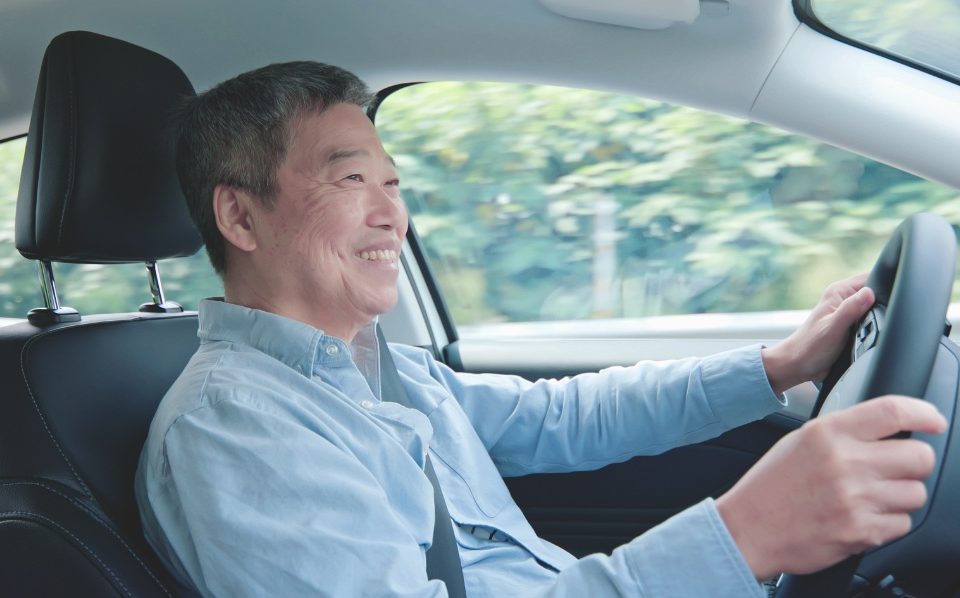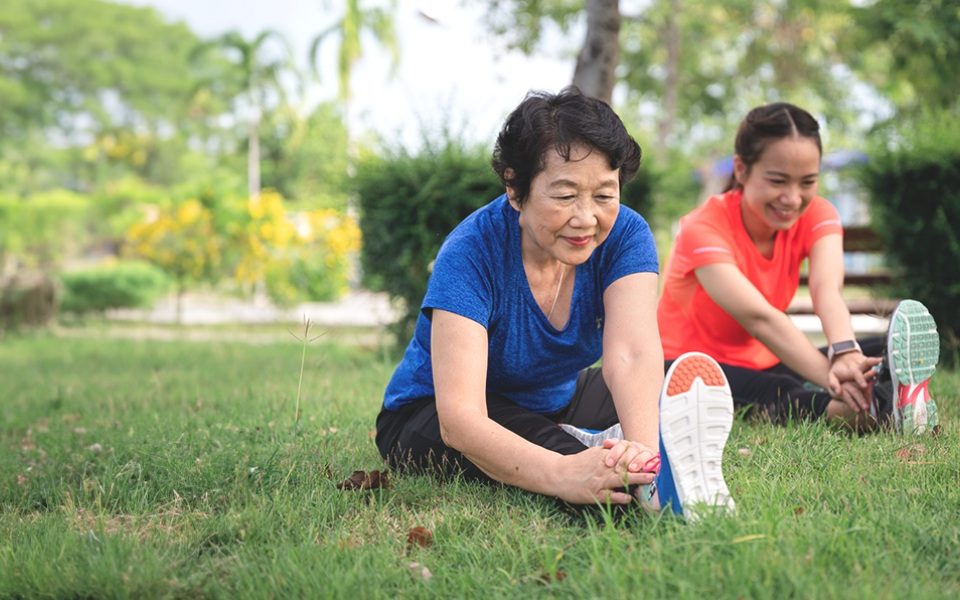Shin Splints Treatment and Rehabilitation Singapore
by: Amanda Chua, TCM Physician, Regis Wellness
Last updated: November 29, 2025
Are you experiencing pain in your shins after a run or jog? You could be experiencing a shin splint. Shin splints refer to one of the most common types of lower leg injuries. It typically happens to people who participate in activities that involve high-impact stress on the feet and legs, including runners, military personnel and dancers. Studies suggest that shin splints account for 6% to 16% of all running injuries while having a prevalence of 22% in dancers.
Shin Splints in Singapore
Similarly, shin splints are rather common in Singapore as well. Jogging is one of the easiest sports for beginners to pick up. For beginners, insufficient or improper warm-up before running or sudden increases in the intensity of their run can expose them to shin splints.

Treat Your Shin Splint at Regis Wellness
High quality, effective, holistic treatment
What are Shin Splints?
Shin splints, or medial tibial stress syndrome (MTSS), refers to pain experienced at the shin (the large bone in the front of your leg) as a result of overexerting the muscles, tendons and bone tissue. Inflammation occurs, causing pain.
While shin splints are usually not serious and can be healed without any long-term health problems, in cases where shin splints are left untreated, they can lead to complications such as a tibial stress fracture. It is especially dangerous if you attempt to continue your physical activity without recovering from your shin splint, aggravating the injury.
Symptoms of Shin Splints
Symptoms of shin splints include:
- Pain along the tibia that can range from mild to severe
- Swelling of the lower legs
- Pain that worsens with physical activity and goes away with rest
- Chronic pain, if the condition worsens
While shin splints are typically not a serious condition, it is still recommended that you get them checked out if you experience the above symptoms as they could be caused by other conditions that may be more serious. In addition, ignoring your shin splint can cause the injury to worsen, potentially leading to chronic pain or other health complications.
Risk Factors for Shin Splints
The follow factors may increase your risks of developing shin splints:
- You are a runner, especially if you are a beginner
- Sudden increase of duration, intensity or frequency of exercise
- Regularly running on hard surfaces such as concrete
- Running on uneven ground or slopes
- You are flat-footed
- You have high arches
- Weak ankles or core muscles
- Tight Achilles tendon or calf muscles
Complications of Shin Splints
A shin splint usually does not cause serious health problems. However, if they are severe, they can limit your ability to carry out daily activities. If you have a shin splint and choose to ignore it and continue straining your injured leg, it can lead to:
- Tibial stress fracture. A stress fracture occurs when overexertion or injuries lead to additional stress placed on the bone, causing it to crack.
- Compartment syndrome. Shin splints can cause your leg to swell, causing pressure to build up, which limits blood flow to the rest of your lower leg and foot. This can prevent your tissues from getting the nutrients and oxygen required via your bloodstream. Swelling and numbness may be experienced. Compartment syndrome can sometimes be considered a medical emergency and surgery may be needed to restore blood flow.
Diagnosing Shin Splints
To diagnose shin splints, your doctor will carry out a physical examination and assess your medical history. In some cases, X-rays or other imaging tests may be required to rule out other possible medical conditions that share similar symptoms.
Preventing Shin Splints
If you are at a higher risk of developing shin splints, here are some methods that you can use to prevent shin splints:
Reduce the impact and stress on your lower legs
If you run or jog regularly on concrete ground, consider running on softer surfaces, which will lower the stress placed on your legs.
Increase your workout intensity progressively
When you want to increase the intensity or duration of your workout, it should be done in a progressive manner so that your body has time to get used to the increased amount of stress placed on the muscles, bones and tendons.
Conduct proper warmups and stretch before exercising
Warming up and stretching your muscles can help to prevent injuries.
Wearing proper footwear that fits well
If you run regularly, having the appropriate footwear is vital to avoiding injuries such as shin splints. A good pair of running shoes can help to soften the impact of running on your legs and feet. Ensuring that the pair of shoes fits your feet well will also help to prevent unwanted injuries.
Arch supports (orthotics)
Arch supports can be especially useful if you have flat arches.
Strengthening your muscles
Strengthening the muscles in your lower legs can condition them and improve muscle endurance. An example of a strengthening exercise would be toe raises, which target your calves.
Treatment and Rehabilitation Methods for Shin Splints
Shin splints can usually be treated easily. For severe cases of shin splints, medication and physiotherapy may be required.
Rest
Rest is the first step to treating injuries such as shin splints. Continuing to strain the injured leg can aggravate the injury and will worsen pain symptoms as well as increase the necessary recovery period. By taking a break from physical activity, you allow your muscles and bones time to recover.
Ice
Using a cold compress on your injured leg can help to control and alleviate symptoms such as swelling and pain.
Pain-relieving medicine
If the pain from your shin splint is causing you great distress or discomfort, over-the-counter pain relievers such as nonsteroidal anti-inflammatory drugs (NSAIDs) can help to reduce pain and swelling.
Physiotherapy for Shin Splints
Physiotherapy is an effective treatment option for shin splints, especially in cases where symptoms persist, interfere with daily activities, or recur with physical activity. Physiotherapy focuses on restoring mobility, improving muscle function, and reducing strain on the lower leg to promote healing and prevent future injury.
Our physiotherapist will assess your flexibility, strength, biomechanics, posture, and pain response before creating a tailored rehabilitation plan. While rest is important, physiotherapy ensures that the recovery process strengthens weak muscles, corrects movement patterns, and reduces stress on the shin to support long-term healing.
Physiotherapy for shin splints typically progresses through the following treatment focuses:
- Pain Relief, Inflammation Reduction & Early Mobility Phase
- Activity modification to reduce impact and avoid aggravating the shin during the early stages
- Manual therapy such as soft tissue release and joint mobilisation to relieve tight muscles in the calves and shins
- Deep tissue massage to reduce muscle knots, stiffness, and tension contributing to shin pain
- Sports massage to improve flexibility in the lower leg muscles and reduce strain on the shin
- Guidance on footwear, warm-up routines, and training adjustments to prevent worsening of symptoms
- Strengthening, Flexibility & Biomechanical Correction Phase
- Strengthening exercises for the calves, tibialis anterior, foot muscles, and hip stabilisers to reduce overload on the shin
- Stretching exercises for the calves, hamstrings, and ankles to improve lower limb mobility
- Balance and proprioception training to improve stability during walking, running, and sports
- Gait and running assessment to identify biomechanical issues such as overpronation or poor stride mechanics
- Progressions introduced based on improvement and tolerance to load
- Advanced Conditioning, Functional Training & Injury Prevention Phase
- Strength and conditioning exercises to improve endurance and resilience in the lower legs
- Functional training such as step drills, low-impact plyometrics, and gradual running reintroduction
- Sport-specific movement training when returning to athletic performance
- Home exercise programs to maintain muscle balance and prevent recurrence
- Recommendations for long-term prevention, including proper footwear, cross-training, and training load management
With consistent physiotherapy, most individuals experience reduced shin pain, improved lower limb strength, and a safer return to walking, running, or sports without recurring shin splints.
Disclaimer:
The information on this website, including but not limited to, text, graphics, images, videos and all other materials contained on this website is for informational purposes only. None of the material is meant to replace a certified and registered Doctor's professional medical advice, diagnosis, and treatment.
No warranties or representations are given in respect of the medical information. Regis Wellness, Regis Wellness’s staff, and the website's operator will not be held liable if a user suffers any injury or loss after relying upon the medical information on this website.
Any devices used for technology-enhanced therapies are intended for use only for general well-being purposes or to encourage or maintain a healthy lifestyle and is not intended to be used for any medical purpose (such as the detection. diagnosis, monitoring, management or treatment of any medical condition or disease). Any health-related information provided by this device or software should not be treated as medical advice. Please consult a certified and registered Doctor for any medical advice required. As with all medical conditions, there are exceptions and nuances to individuals’ condition and treatment modalities. We aim to provide only a general understanding for each section.
Alaia, Michael. “Shin Splints.” Shin Splints - OrthoInfo, OrthoInfo, Aug. 2019, https://orthoinfo.aaos.org/en/diseases--conditions/shin-splints/.
“All About Stress Fractures of the Shin.” Stress Fractures of the Shin: Causes, Treatment, Recovery, Healthline Media, 12 June 2020, https://www.healthline.com/health/bone-health/stress-fracture-shin.
Chumari, Alvin. Shin Splints: Symptoms and Causes, HealthXchange, https://www.healthxchange.sg/fitness-exercise/sports-injuries/treat-knee-pain-shin-splints.
Chumari, Alvin. How to Treat Common Running Injuries: Knee Pain and Shin Splints, HealthXchange, https://www.healthxchange.sg/fitness-exercise/sports-injuries/treat-knee-pain-shin-splints.
Craig, Debbie I. “Medial tibial stress syndrome: evidence-based prevention.” Journal of athletic training vol. 43, 3, 316-8. 2008. doi:10.4085/1062-6050-43.3.316
Durning, Marijke. “Shin Splints.” Shin Splints: Symptoms, Causes & Treatments, Healthgrades, 25 Aug. 2020, https://www.healthgrades.com/right-care/knee-and-leg-injury/shin-splints.
Newman, Tim. “All You Need to Know about Shin Splints.” Shin Splints: Symptoms, Causes, and Treatments, Medical News Today, 13 Oct. 2017, https://www.medicalnewstoday.com/articles/242169.
Ragos, Reggie. “Shin Splints Physiotherapy.” GUIDE: Physical Therapy Guide to Shin Splints (Medial Tibial Stress Syndrome), Choose PT, 13 Sept. 2018, https://www.choosept.com/guide/physical-therapy-guide-shin-splints-medial-tibial-stress-syndrome-.
Riegleman, David Lee, and Julie A Creech. “Successful Treatment of Medial Tibial Stress Syndrome with Interosseous Membrane Acupuncture: A Case Series.” Medical acupuncture vol. 33,2, 2021. 150-152. doi:10.1089/acu.2020.1448
“Shin Splint Treatments.” Shin Splint Treatment: For Pain Relief and Recovery, Healthline Media, 19 Mar. 2019, https://www.healthline.com/health/shin-splint-treatment.
“Shin Splints.” Shin Splints - Diagnosis and Treatment, Mayo Foundation for Medical Education and Research, 16 Oct. 2021, https://www.mayoclinic.org/diseases-conditions/shin-splints/diagnosis-treatment/drc-20354110.
“Shin Splints.” Shin Splints - NHS, NHS, 10 Dec. 2019, https://www.nhs.uk/conditions/shin-splints/.
“Shin Splints.” Shin Splints - Symptoms and Causes, Mayo Foundation for Medical Education and Research, 16 Oct. 2021, https://www.mayoclinic.org/diseases-conditions/shin-splints/symptoms-causes/syc-20354105.
“Shin Splints.” Shin Splints: Causes, Symptoms, Treatment & Prevention, Cleveland Clinic, 2 May 2020, https://my.clevelandclinic.org/health/diseases/17467-shin-splints.
Taunton, J.E., et al. “The Role of Biomechanics in the Epidemiology of Injuries.” Sports Medicine 6, 107–120, 1988. https://doi.org/10.2165/00007256-198806020-00005
Wheeler, Tyler. “What Are Shin Splints?” Shin Splints: Causes, Treatment, Recovery, and Prevention, WebMD, 15 Dec. 2021, https://www.webmd.com/fitness-exercise/shin-splints.


